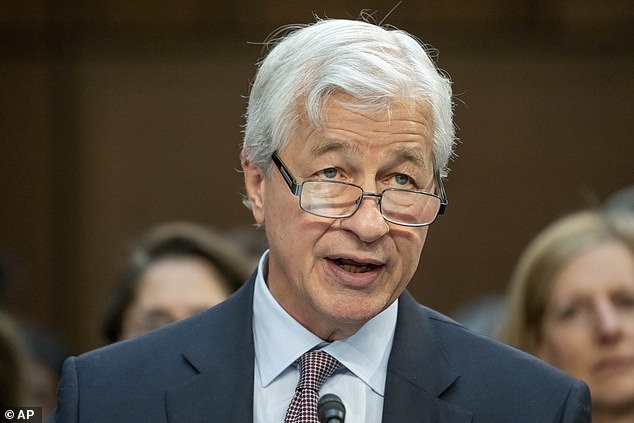<!–
<!–
<!– <!–
<!–
<!–
<!–
Borrowing costs rose on both sides of the Atlantic as investors scaled back their bets on rate cuts.
Ten-year US bond yields rose to 4.46 percent – the highest level since November – while the equivalent in Britain hit a five-week high of 4.13 percent.
The rise in bond yields – which feed into the cost of mortgages and other loans – came amid new doubts about when central banks will cut rates and by how much.
Jamie Dimon, CEO of investment bank JP Morgan, warned yesterday that inflation may not fall as far as hoped – meaning interest rates will remain higher than expected for longer.
In his annual letter to shareholders, Dimon said the bank plans to keep U.S. interest rates somewhere between 2 and 8 percent, due to the impact of high government spending.

Interest rate fears: JP Morgan CEO Jamie Dimon (pictured) warned that inflation may not fall as far as hoped – meaning interest rates will remain higher than expected for longer
In the US this is 5.5 percent and in Great Britain it is 5.25 percent.
“It is important to note that the economy is being fueled by large amounts of government deficit spending and previous stimulus,” Dimon wrote.
“There is also a growing need for increased spending as we continue to transition to a greener economy, restructure global supply chains, boost military spending and combat rising healthcare costs.
“This could lead to stronger inflation and higher interest rates than markets expect.”
Investors now think there will be only two or three interest rate cuts this year in the US and Britain.
At the beginning of the year it was hoped that there could be as many as six.
All eyes will be on US inflation figures tomorrow for new clues as to when the Federal Reserve will cut interest rates.
And the European Central Bank is expected to leave eurozone interest rates unchanged on Thursday before cutting them this summer – possibly in June.

